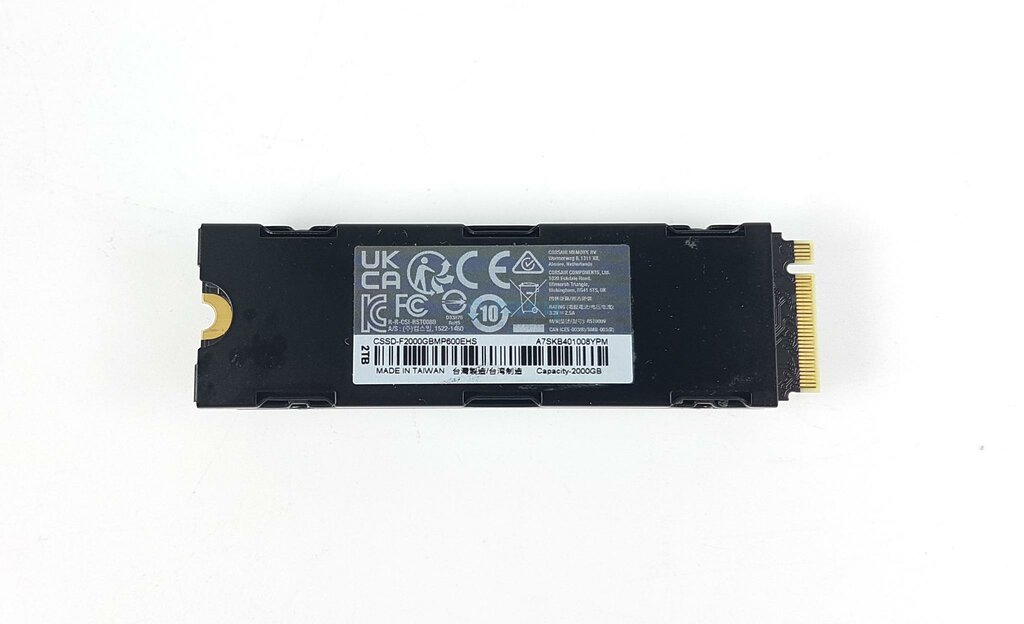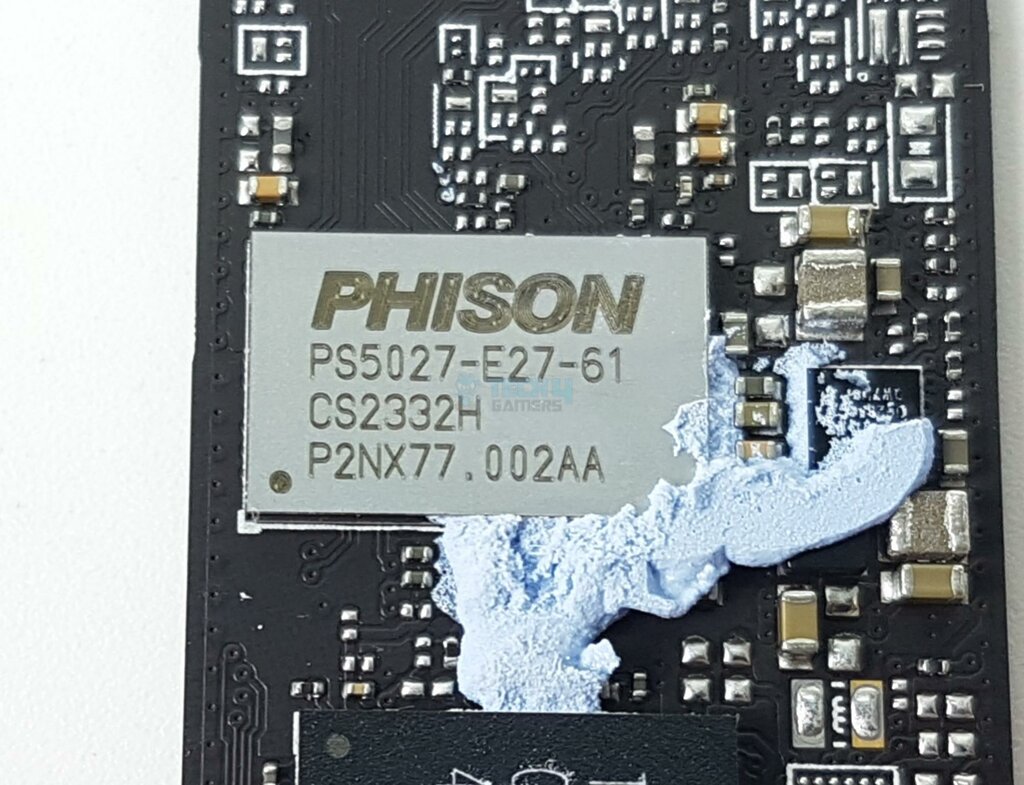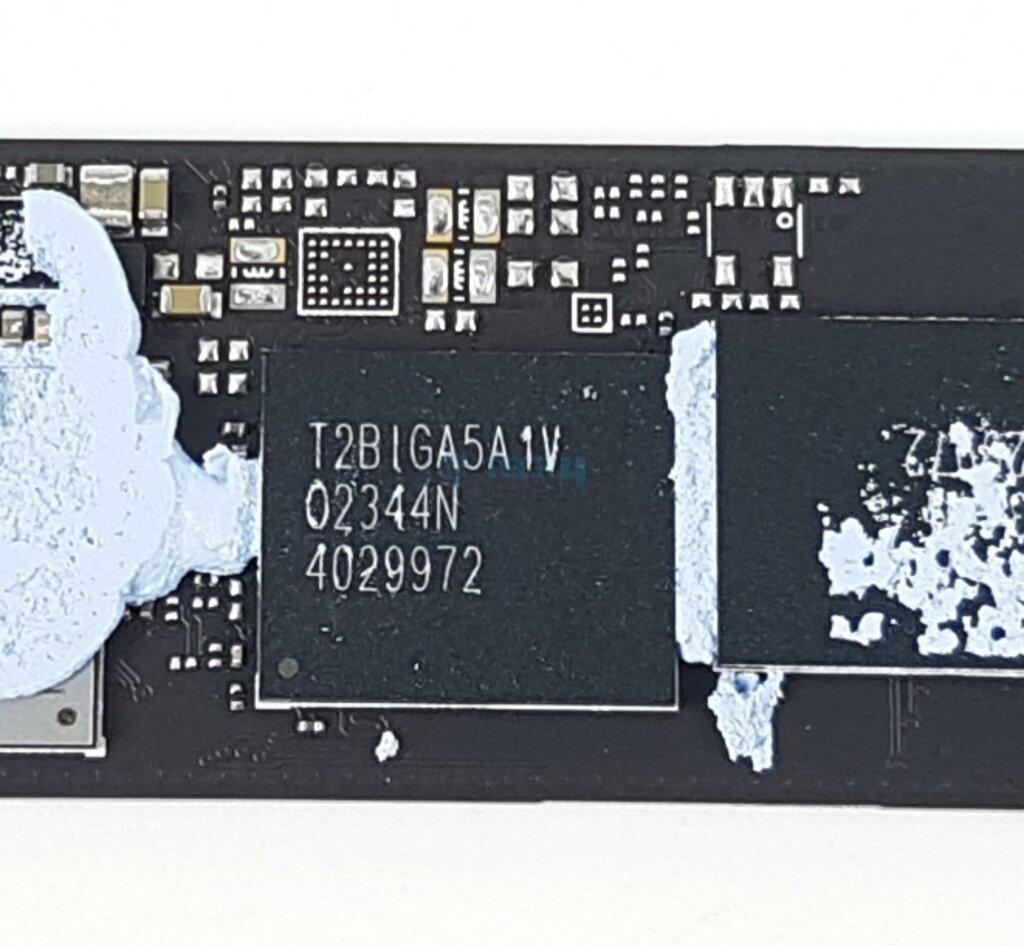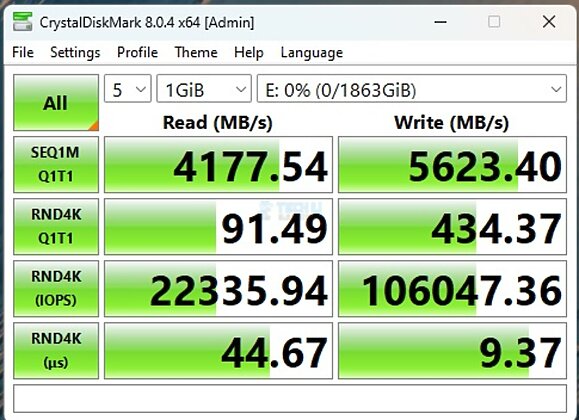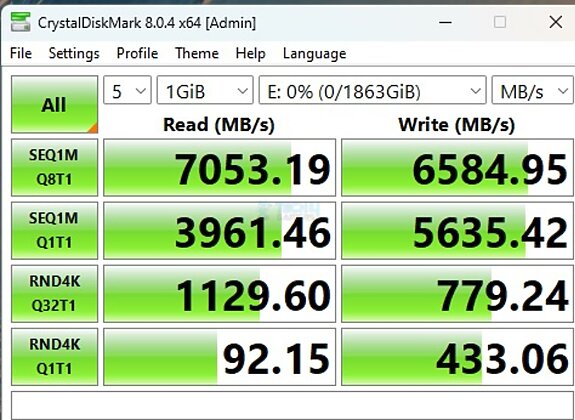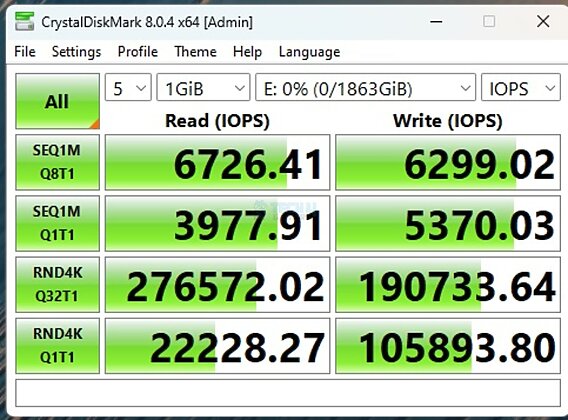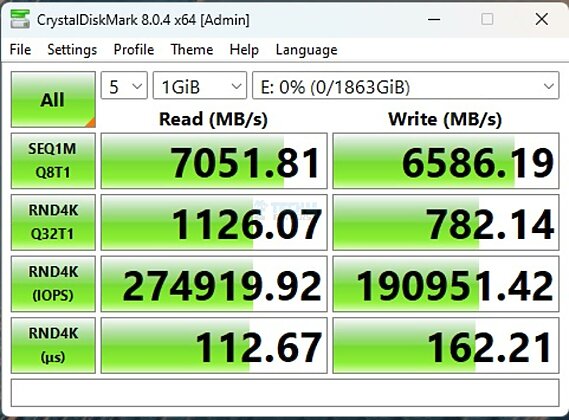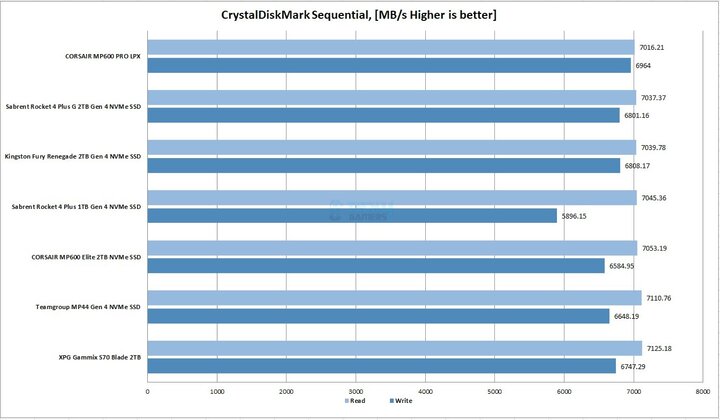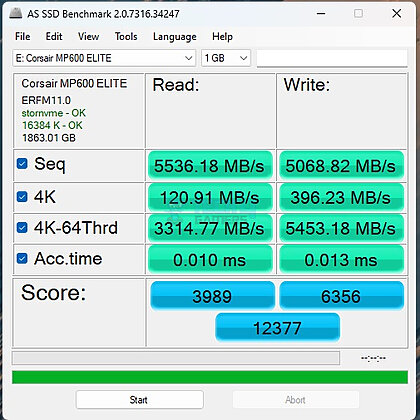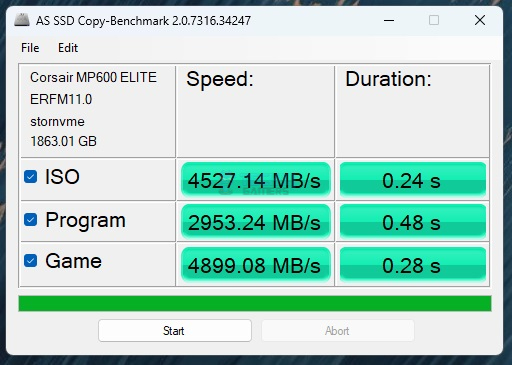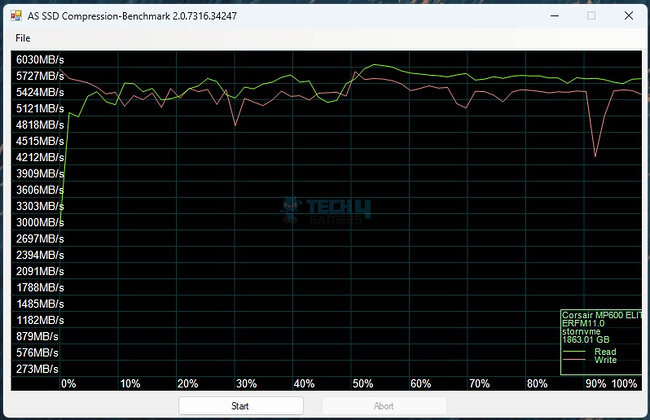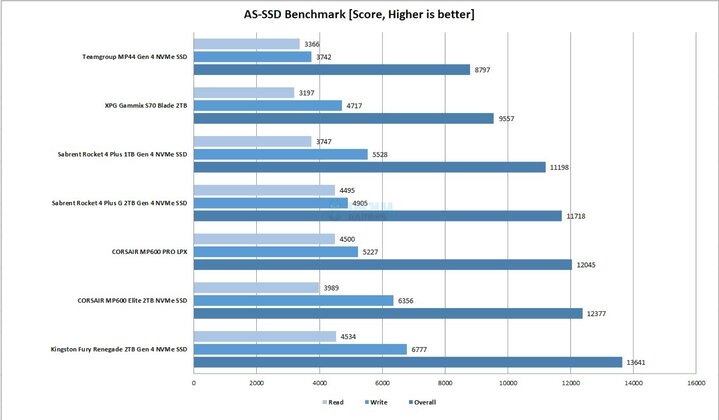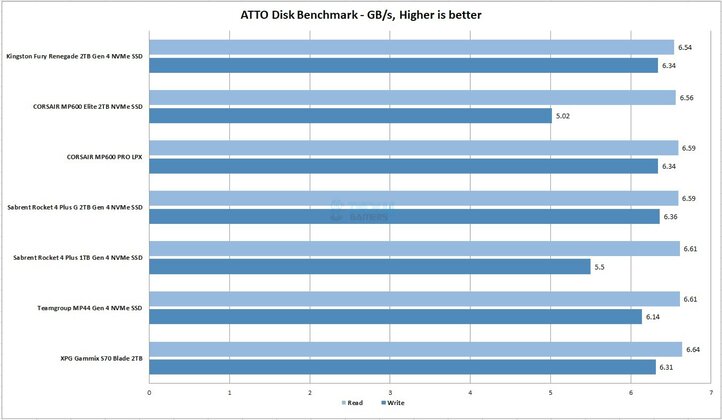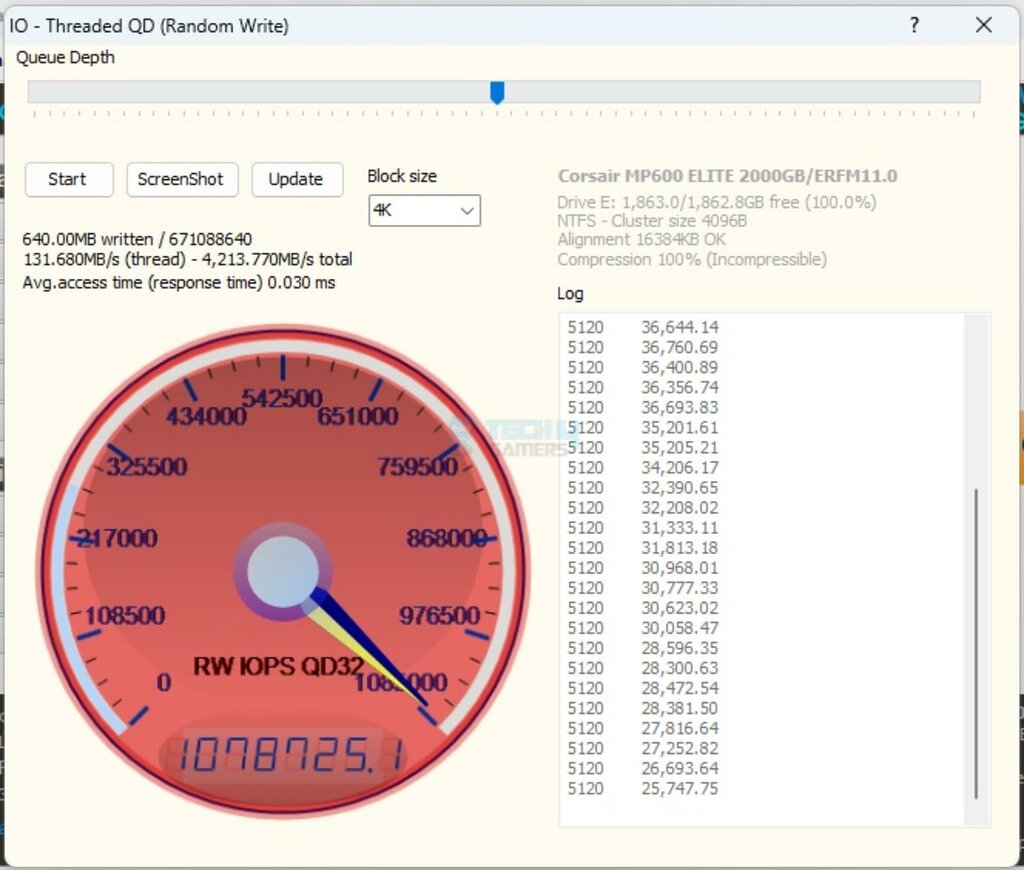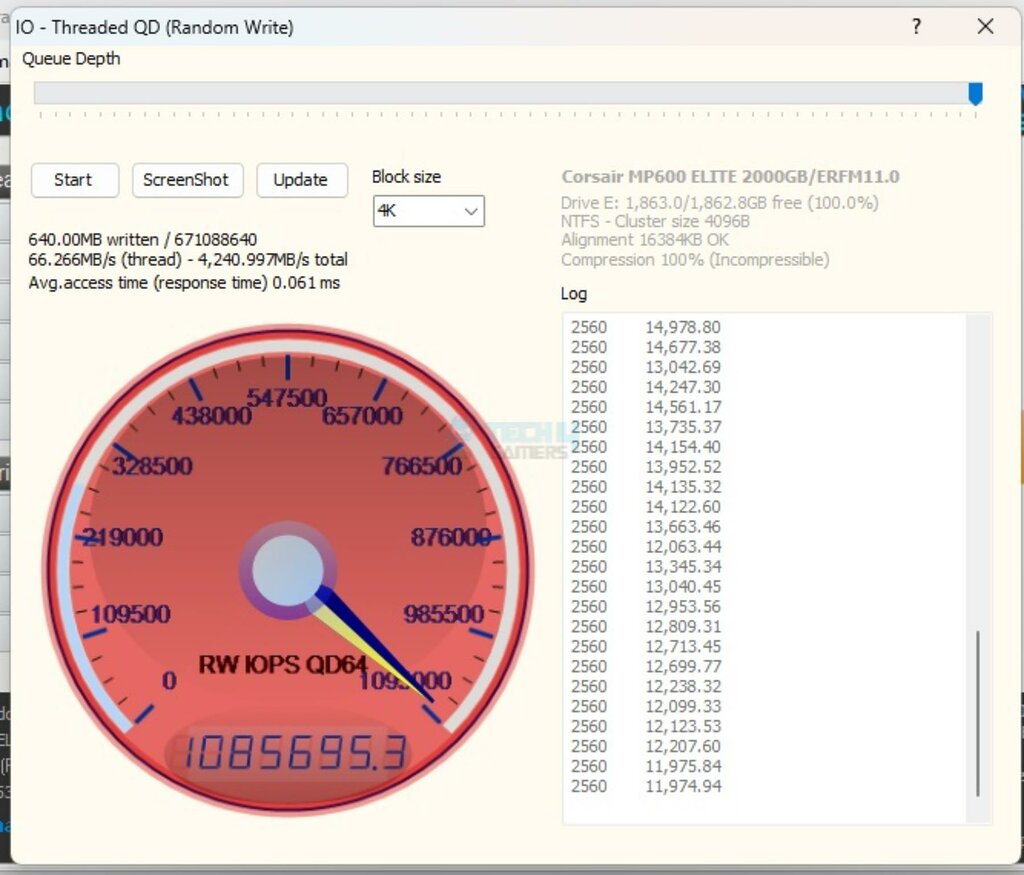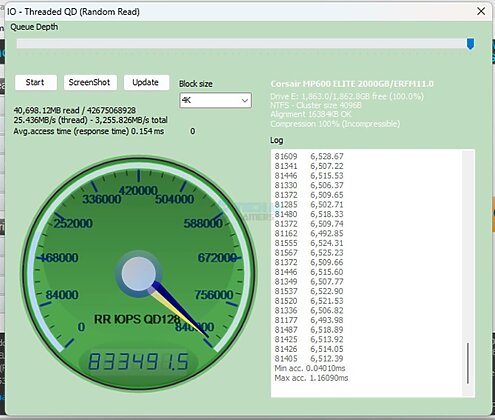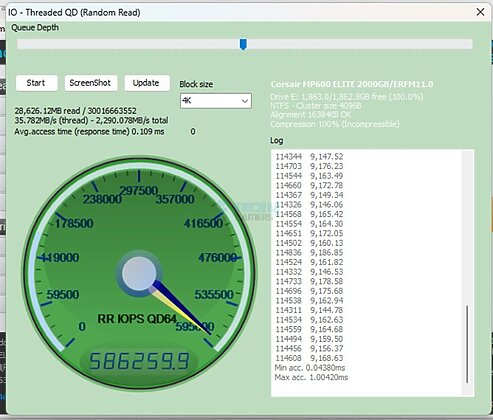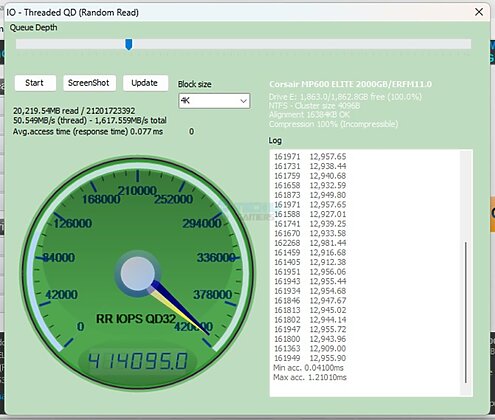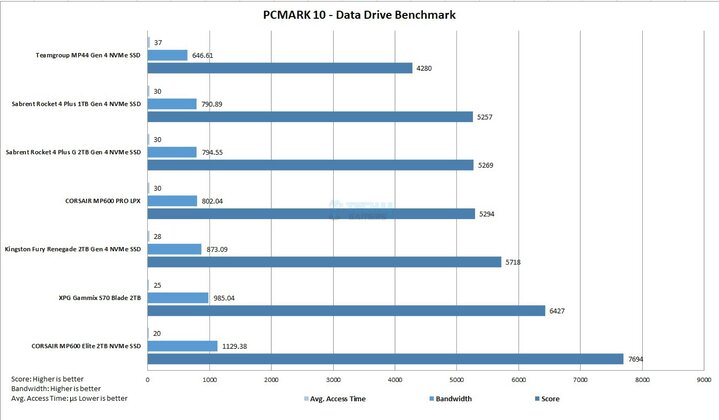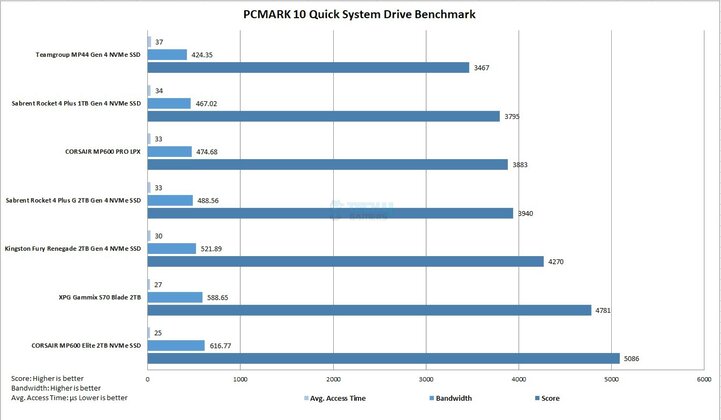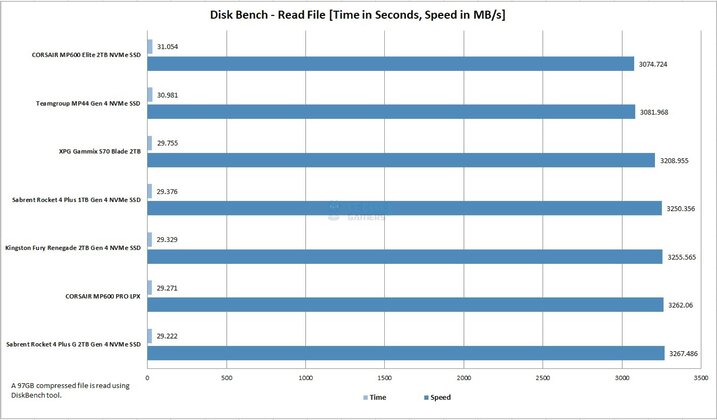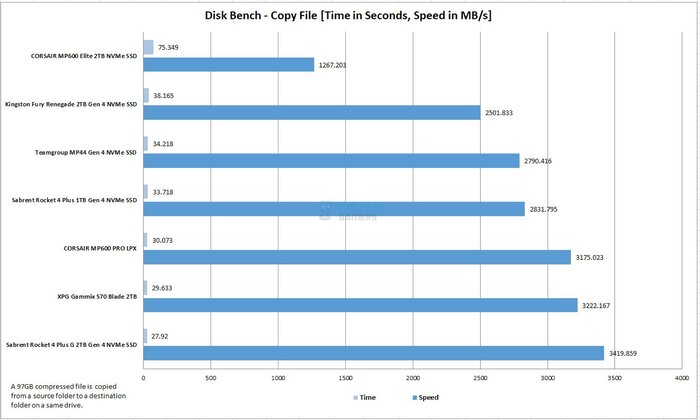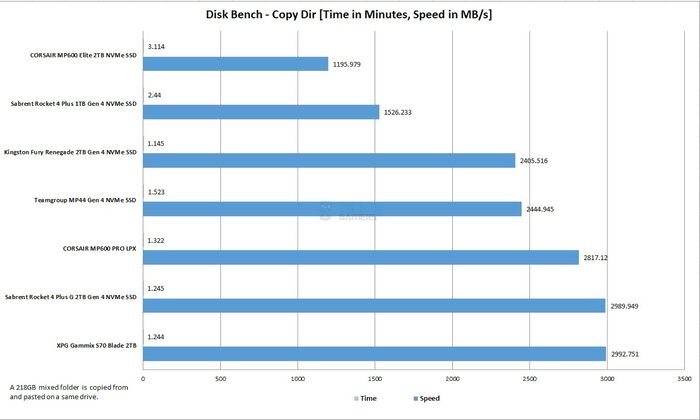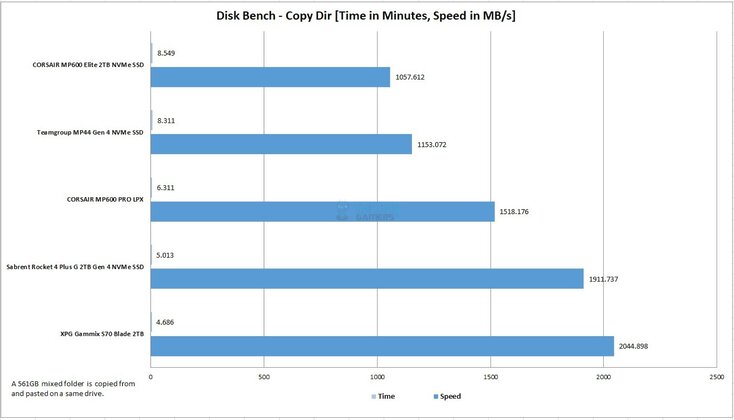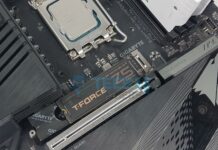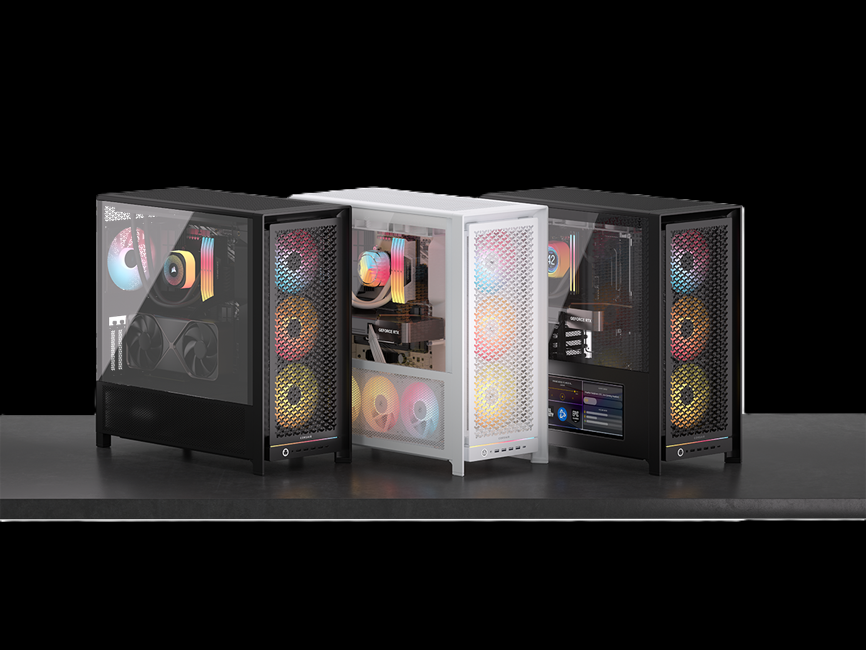Jack Of All Trades!
Summary
The CORSAIR MP600 Elite NVMe SSD series excels in offering high-speed, efficient storage solutions with capacities of 1TB and 2TB. Utilizing the latest Phison E27T controller and 3D TLC NAND Flash, these Gen4 drives deliver impressive performance up to 7000MB/s read, and 6500MB/s write speeds without a DRAM chip, leveraging dynamic SLC caching instead. Designed for gamers and efficiency-seekers, they feature Microsoft DirectStorage support and PlayStation 5 compatibility. However, the absence of DRAM may deter heavy data users. With a 5-year warranty, the MP600 Elite series stands out as a cost-effective choice for cutting-edge storage needs.
Hours Tested: 5
Overall
-
Quality - 9/10
9/10
-
Performance - 8.5/10
8.5/10
-
Features - 9/10
9/10
-
Value - 8.5/10
8.5/10
Pros
- Up to 7000MB/s Sequential Read
- Up to 6500MB/s Sequential Write
- PS5 Compatibility
- Heatsink Cooler
- 5-Year Warranty
- All-rounder performance
Cons
- Uneven performance
Recently the SSD manufacturers have come out with new Gen4 NVMe SSDs that don’t have DRAM chips and using new controllers from Phison, Maxio, and InnoGrit (E27T, MAP1602, IG5220); the competition is fierce in this segment of NVMe drives using HMB.
CORSAIR has also released the MP600 Elite series of SSDs that are available in 1TB and 2TB versions with an optional configuration of the heatsink version available as well. These drives are powered by new and more efficient Phison E27T and use Kioxia BiCS6 3D TLC NAND Flash.
Key Takeaways
- The CORSAIR MP600 Elite is a Gen4 NVMe SSD offering up to 2TB of high-speed, efficient storage with impressive read/write speeds, PlayStation 5 compatibility, and advanced features like Microsoft DirectStorage, all without a DRAM chip.
- You should buy the CORSAIR MP600 Elite 2TB NVMe SSD if you want a bang for the buck efficient and secure drive with good performance.
- You should not buy the CORSAIR MP600 Elite 2TB NVMe SSD if you are a power user with workloads surrounding write-intensive tasks on large data files.
- Why you can trust Tech4Gamers: Our reviews are based on dedicated hands-on testing by our team of experienced hardware experts. Find out more about how we test.
Here are the specifications:
| Storage | 1TB | 2TB |
| Form Factor | M.2 2280 | |
| Interface | NVMe 1.4 PCIe Gen 4×4 | |
| Controller | Phison PS5027-E27T | |
| NAND | 3D TLC NAND | |
| DRAM Cache Size | HMB | |
| NAND Cache Size | Dynamic SLC | |
| TWB | 600 | 1200 |
| MTBF | 1,500,000 hours | |
| Sequential Read | Up to 7000MB/s | |
| Sequential Write | Up to 6200 MB/s | Up to 6500MB/s |
| 4K Random Read | Up to 1.0M | |
| 4K Random Write | Up to 1.0M | Up to 1.2M |
Packaging And Unboxing
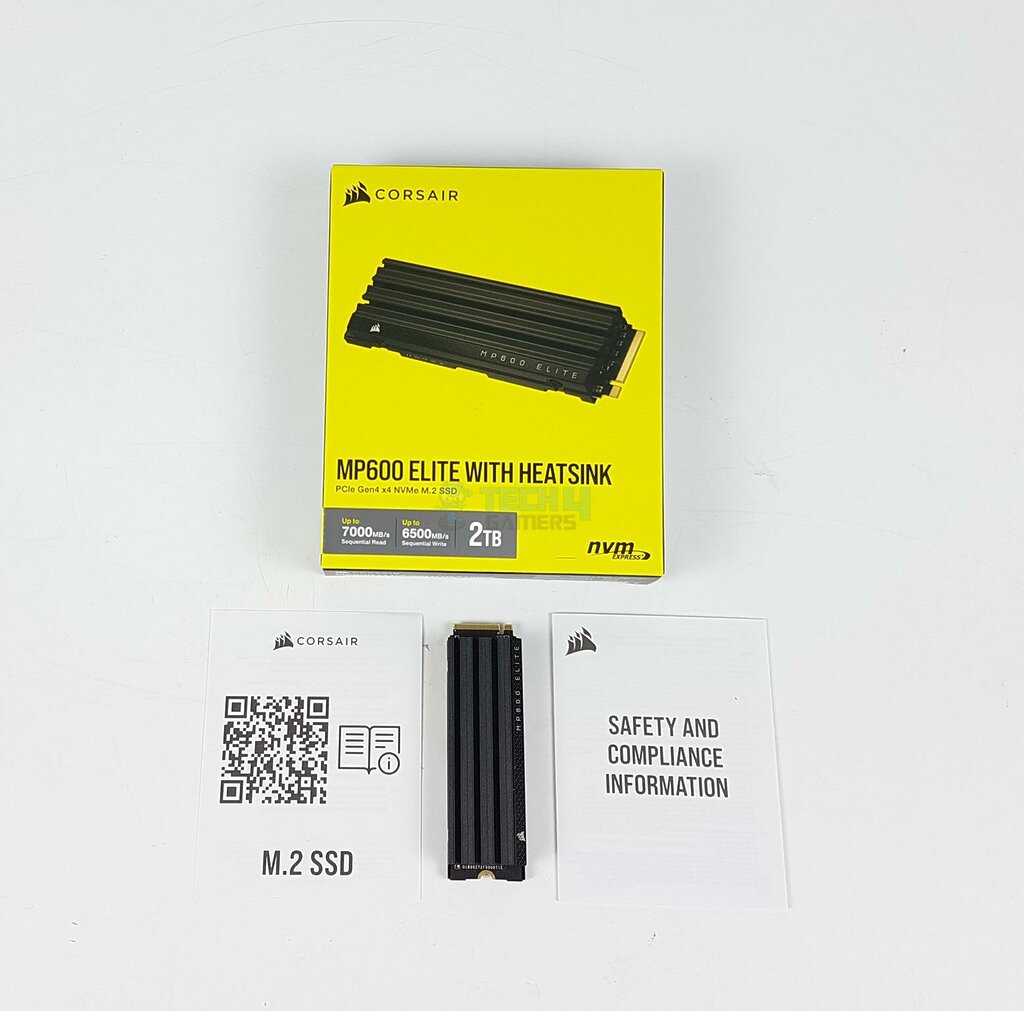
The drive is shipped inside a paperboard packing box that has a yellow and black color theme. There is a cardboard container inside that has the drive tucked inside. The following are provided:
- 1x SSD
- 1x Safety and Compliance Information page
- 1x Scan Label page for the product webpage
Design
I am testing a heatsink version of the MP600 Elite 2TB SSD. There is a black color low-profile aluminum-made heat sink that is pre-installed over the SSD. The SSD has a dimension of 22x80x2mm, whereas the package has a size of 24x80x9mm. Here 9mm refers to the height of the package (SSD and Heatsink). Since this height is less than 11.5mm, this drive is compatible with the Sony PlayStation 5.
There is a stylish branding towards the base of the heatsink that CORSAIR brand and MP600 Elite. Finally, this text is printed over the base and faces the user upright, unlike the MP600 Pro, where this text is inverted once installed. This drive has a form factor of M.23 2280 and uses M Key Type.
The backside of the package has a sticker that shows the part number and serial number of the drive along with its capacity, which is 2TB (2000GB). This drive features 256 AES Encryption along with support for TRIM, S.M.A.R.T, and Garbage Collection.
The Dev Slp Power is specified as <5mW, and the power rating is 5.7W (average active read and write). The operating temperature range is 0ᵒC to 70ᵒC, and this drive is listed to throttle at 81ᵒC. the storage temperature range is -40ᵒC to 85ᵒC. The vibration rating stands at 80Hz to 2000Hz/20G.
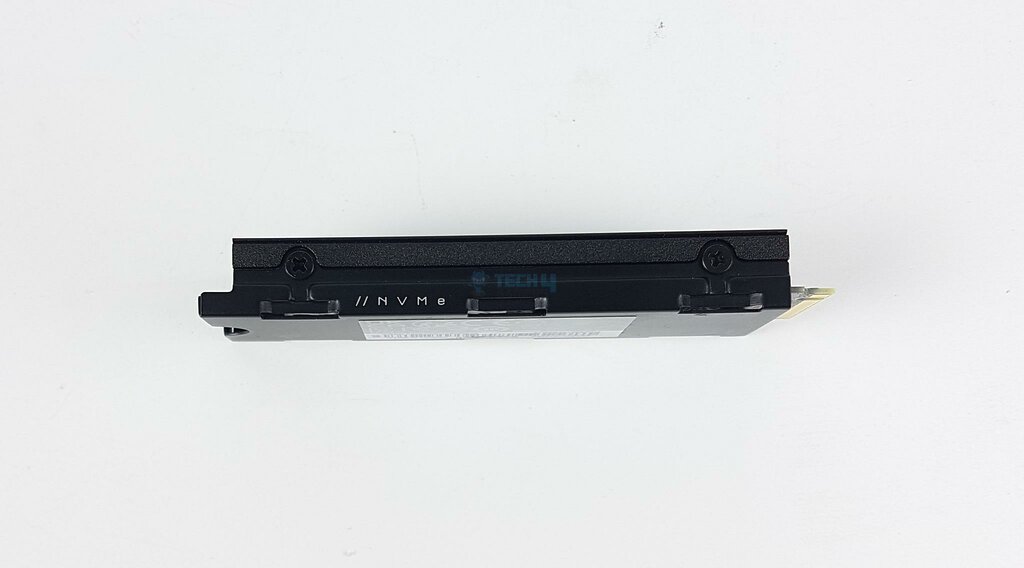
I am showing a side view of the drive. There is an NVMe branding over the tray, and you can see two Philips screws securing the tray with the heatsink. There are a total of 4 such screws.
What About Components?
I have opened the package to see what is under the hood.
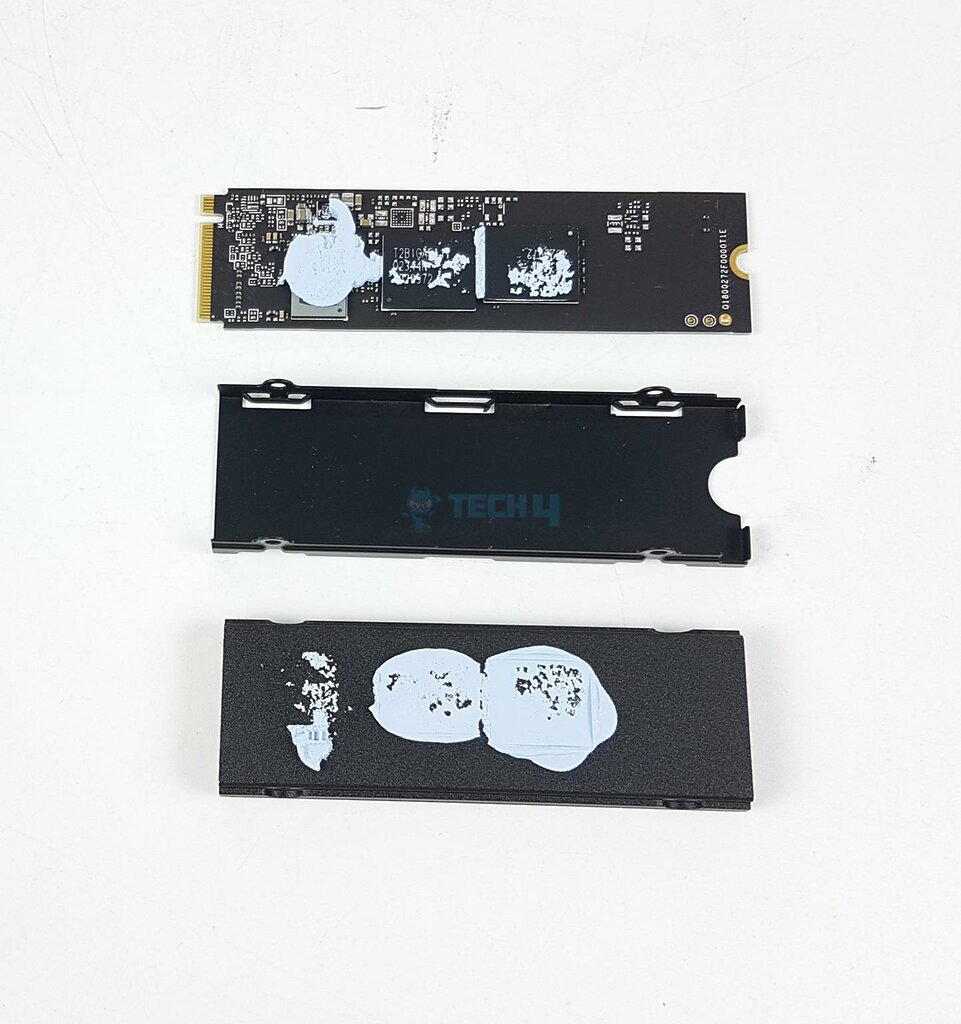
Well, seems like CORSAIR has used thermal putty instead of thermal pads, which is quite apparent. Thermal Pads don’t spread like this. The heatsink has a flat surface (made of aluminum) that makes contact with the drive. The drive sits in the tray. This is a single-sided SSD meaning all the components are on one side of the black PCB.
CORSAIR has used the Phison PS5027-E27T controller. This is a DRAMless controller that uses 4x channels. It is built on TSMC 12nm process technology, and it is powered by an ARM Cortex-R5 processor. I think the focus here is not on the fast storage solution but on efficient storage operations. This makes sense, particularly for the Gen4-enabled laptops/notebooks.
The E27T has a clock rate of 1.2GHz with a bus speed of 3600MT/s. This high bus rate will allow the controller to fully utilize the 4 lanes over the PCIe. This controller is also listed to support NVMe 2.0, which is used in Gen5 SSDs. However, this is a Gen4 SSD, and the NVMe interface is 1.4.
CORSAIR has used 162-layered TLC NAND (Kioxia BiSC6). There are two packages indicating that each chip has 1TB (1000GB) storage capacity. This flash can use 2400 MT/s over the Gen4x4 protocol for full functioning. This flash has a four-plane design.
There is no DRAM cache chip on these drives since these drives use your PC’s main memory. However, there is Dynamic SLC caching which you should enable if not already under the device manager to reap the benefit.
Testing
The below-mentioned test build is used:
- Intel i7 13700k
- ARCTIC Liquid Freezer II 240
- GIGABYTE Z790 AORUS ELITE AX
- Anacomda ET RGB 32GB 7200MHz CL34
- GIGABYTE GeForce RTX 3060 VISION OC
- Sabrent Rocket 4 Plus 2TB NVMe SSD [OS Drive]
- CORSAIR AX1200i Platinum PSU
- Open-air Bench
We have used the following software:
- AS SSD
- ATTO Disk Benchmark
- CrystalDiskMark
- Anvil Pro Storage Utilities 1.1.0
- DiskBench
- Blackmagic Disk Benchmark
- 3DMARK Storage Benchmark
- PCMARK10 Storage Benchmark
Microsoft Windows 11 22H2 is used for the testing.
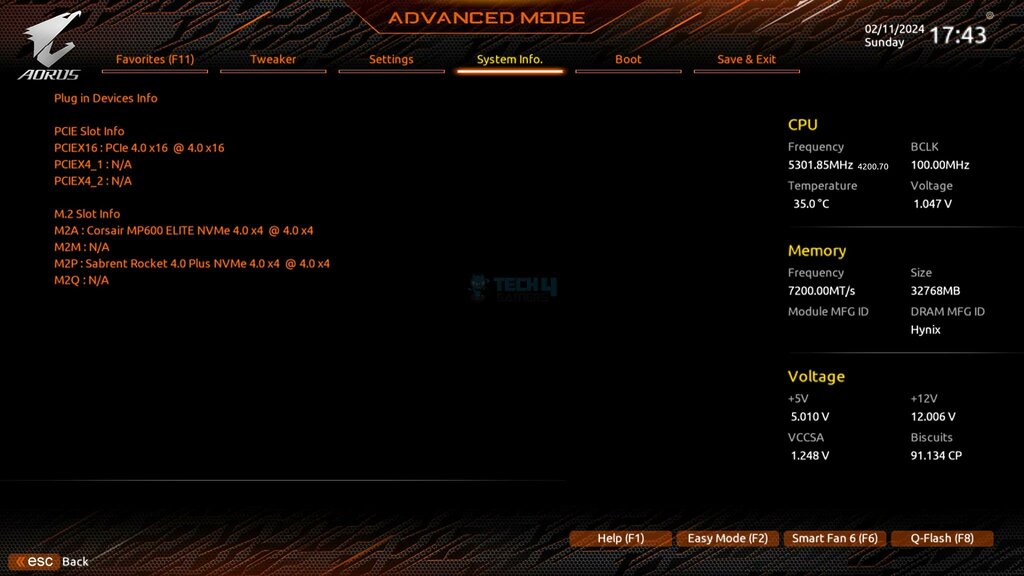
The drive was picked by UEFI BIOS and listed as operating on Gen 4×4.
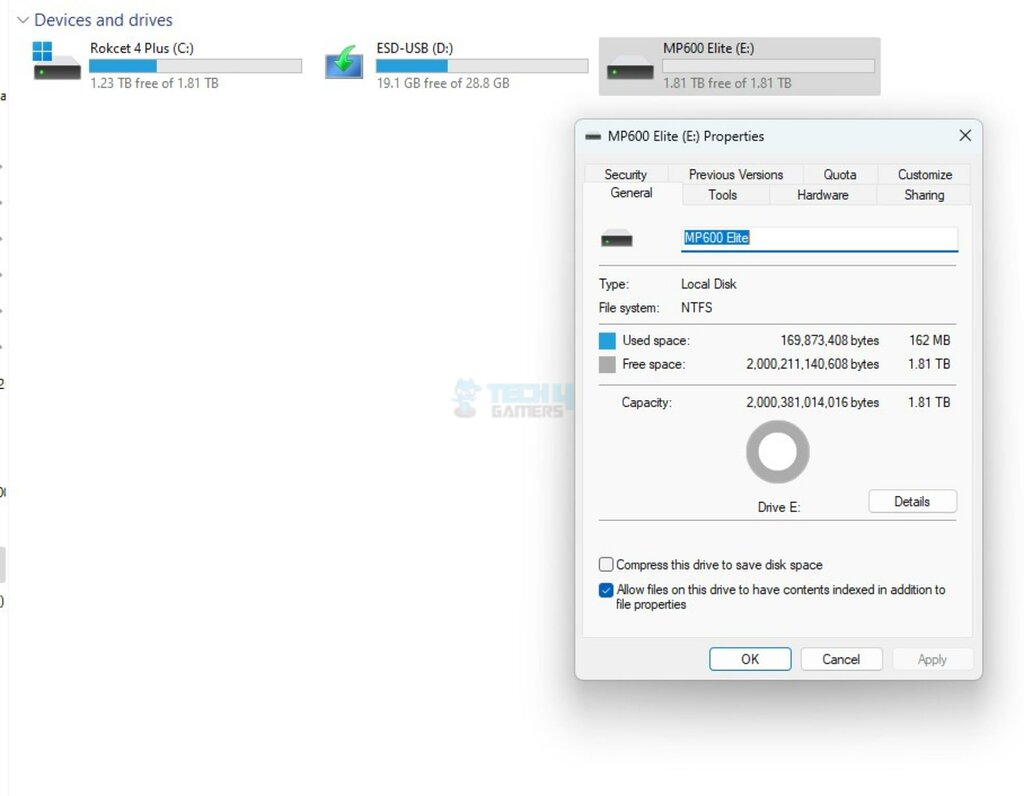
The above picture shows that 1.81TB is available at the user’s disposal.
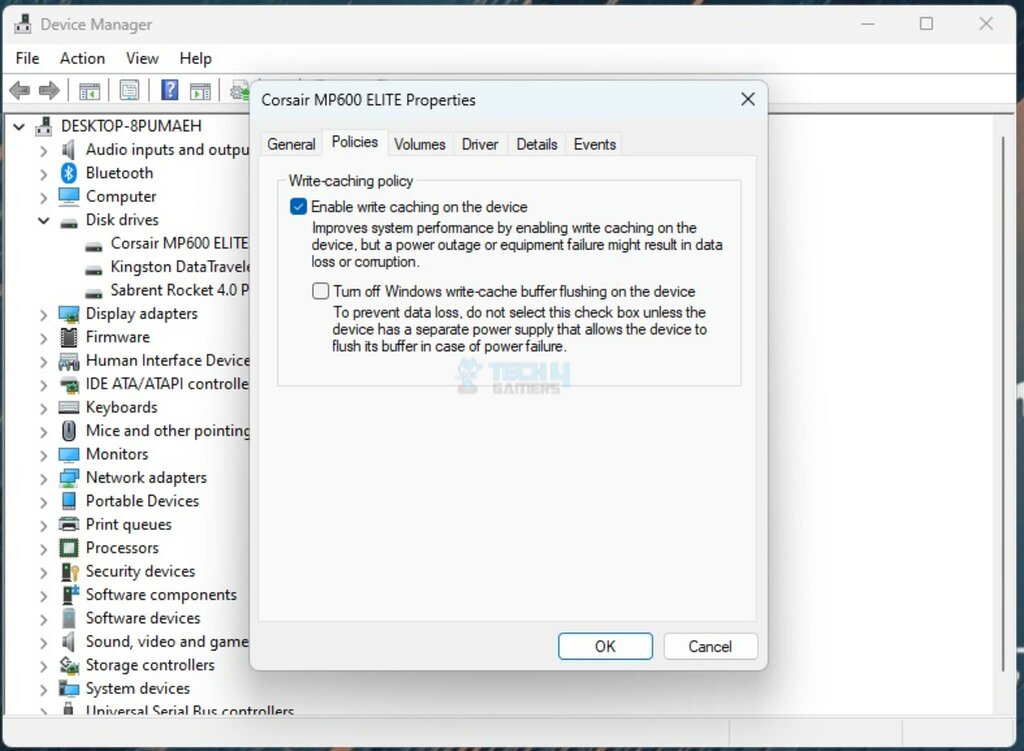
Since this drive supports dynamic SLC caching. It does not have a DRAM chip and has a 2TB size; you should enable the write caching in the Device Manager.
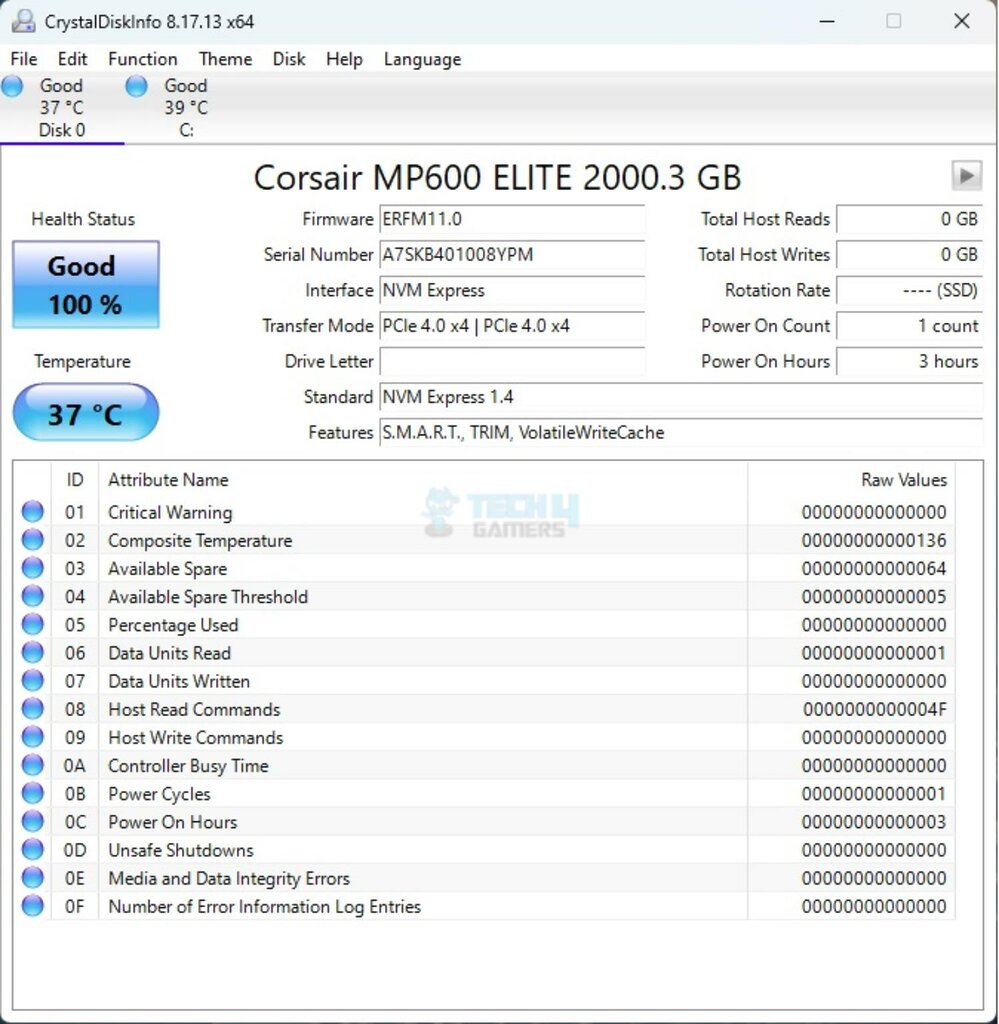
I ran CrystalDiskInfo after installing the disk. The firmware version is ERFM11.0. The interface is listed as NVM Express using 1.4 as standard. It also confirmed that the drive is operating at PCIe 4.0 at an x4 speed link. The supported features are S.M.A.R.T, TRIM, and VolatileWriteCache.
Test Results
CrystalDiskMark
Let’s start with four different runs of CrystalDiskMark. This is an impressive performance from the CORSAIR SSD. This SSD verified the rated sequential read and write speeds. Not only is this, but the 4K Random performance in the Q1T1 quadrant is impressive as well. The overall performance in CrystalDiskMark is quite good.
Two drives in the graph are DRAMless designs. One is the CORSAIR MP600 Elite 2TB drive, and the other is the Teamgroup MP44. This performance is relative since all disks are tested for their rated sequential read and write speeds. All drives are operating above 7000MB/s in sequential read. The difference comes from the sequential writes. CORSAIR MP600 Elite has a good performance.
AS SSD Benchmark
Next, we ran the AS SSD software to test the performance of the drive. Please note that each stress testing software works differently, and there would be variations between software and between two runs even on the same SSD.
The overall score in this benchmark is quite good. But what I don’t like is regular dips in the write speeds during the compression benchmark. The overall performance in the Copy benchmark is good.
Anvil Storage Utilities Benchmark
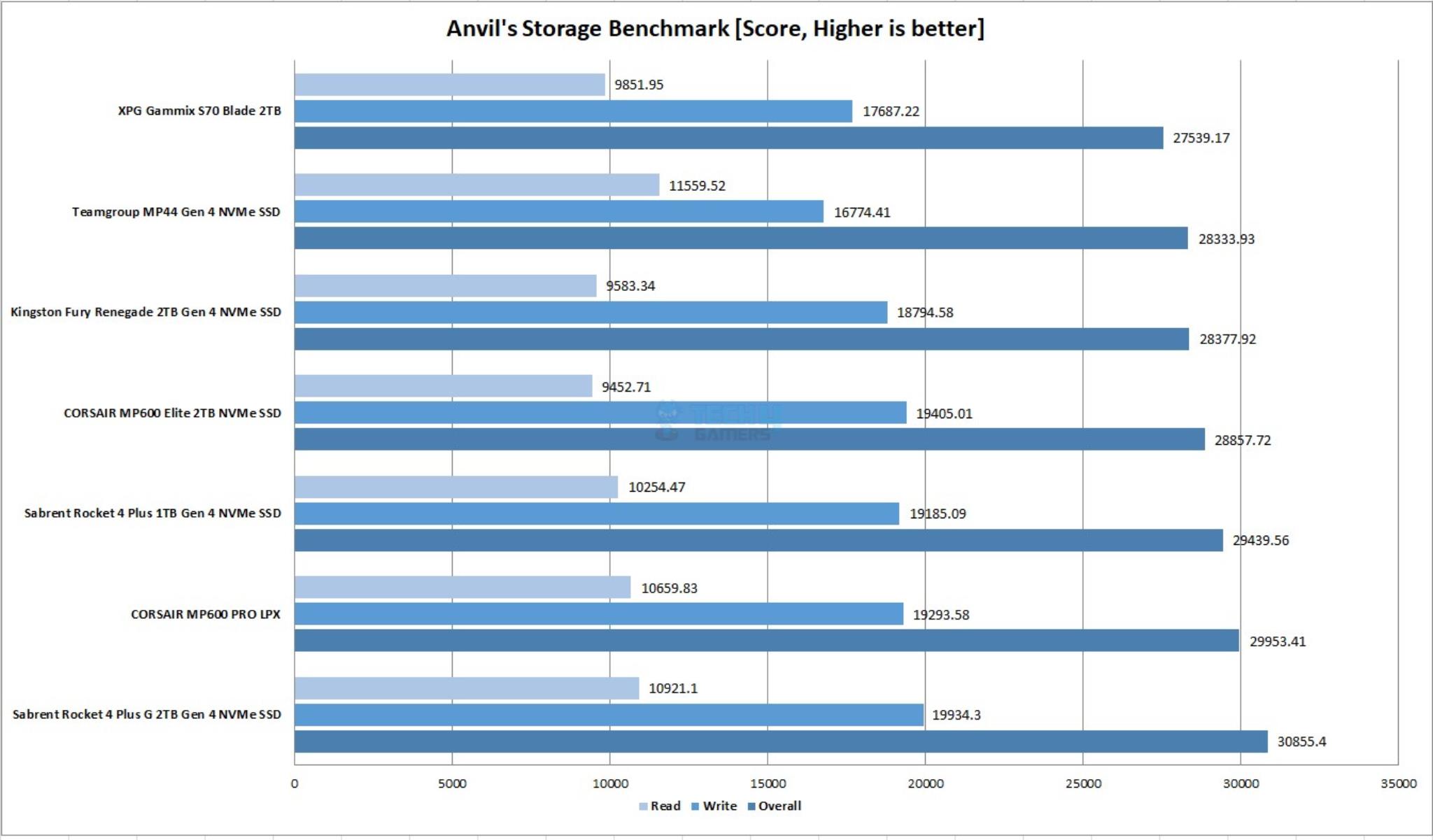
Next, I ran the Anvil Storage Utilities benchmark to test the performance of the drive. Again, I am surprised by this performance. There seem to be inconsistent results in synthetic benchmarks. Anyhow, this SSD has a good performance, albeit the read speed is the lowest in the graph.
I also ran Threaded Writes in queue depth of 32 and 64. The above picture shows the result of both runs. This is a good performance from this SSD as it crosses the 4K Random Write speed rating of 1,000,000 IOPS in both runs.
Next, I ran the Threaded Reads in queue depths of 32, 64, and 128 threads. This drive reached above 800,000 IOPS at 128 queue depth which falls short of rated 1,000,000 IOPS from CORSAIR.
3DMark Storage Test
3DMark Storage test is relatively a new test bench measuring the gaming-only performance of the given drive using three games. It measures the load time of the games, recording the gameplay, saving the game, and moving the game. The overall score is given in the bandwidth and access time.
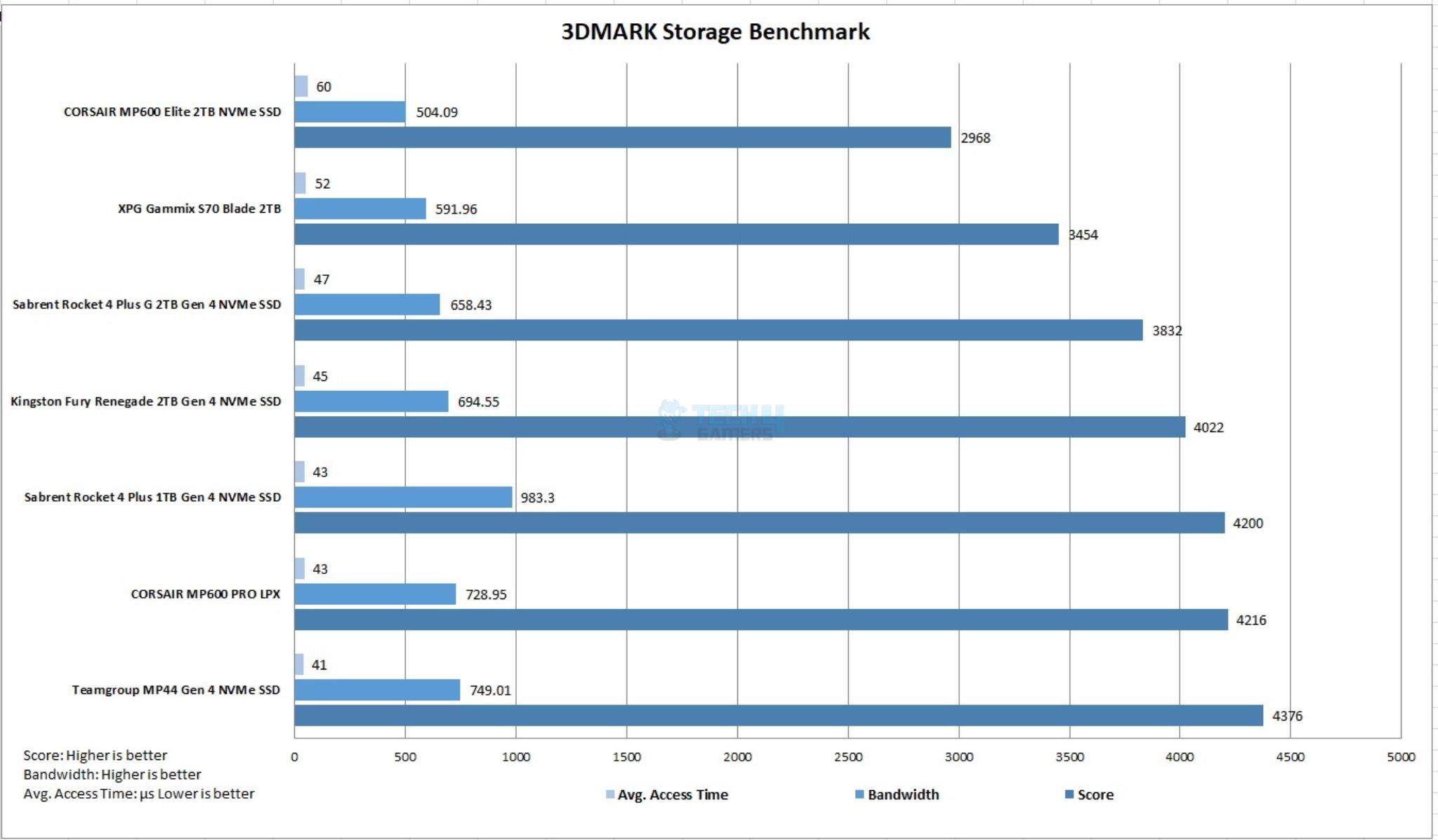
This is the first benchmark that shows the true performance potential of this drive in my opinion. It has scored 2968 and a bandwidth of 504.09MB/s with an average access time of 60µs.
PCMARK10
We ran two tests from Storage benchmarks in this suite. These are Data Drive Benchmark and Quick System Drive Benchmark.
Blackmagic Disk Benchmark
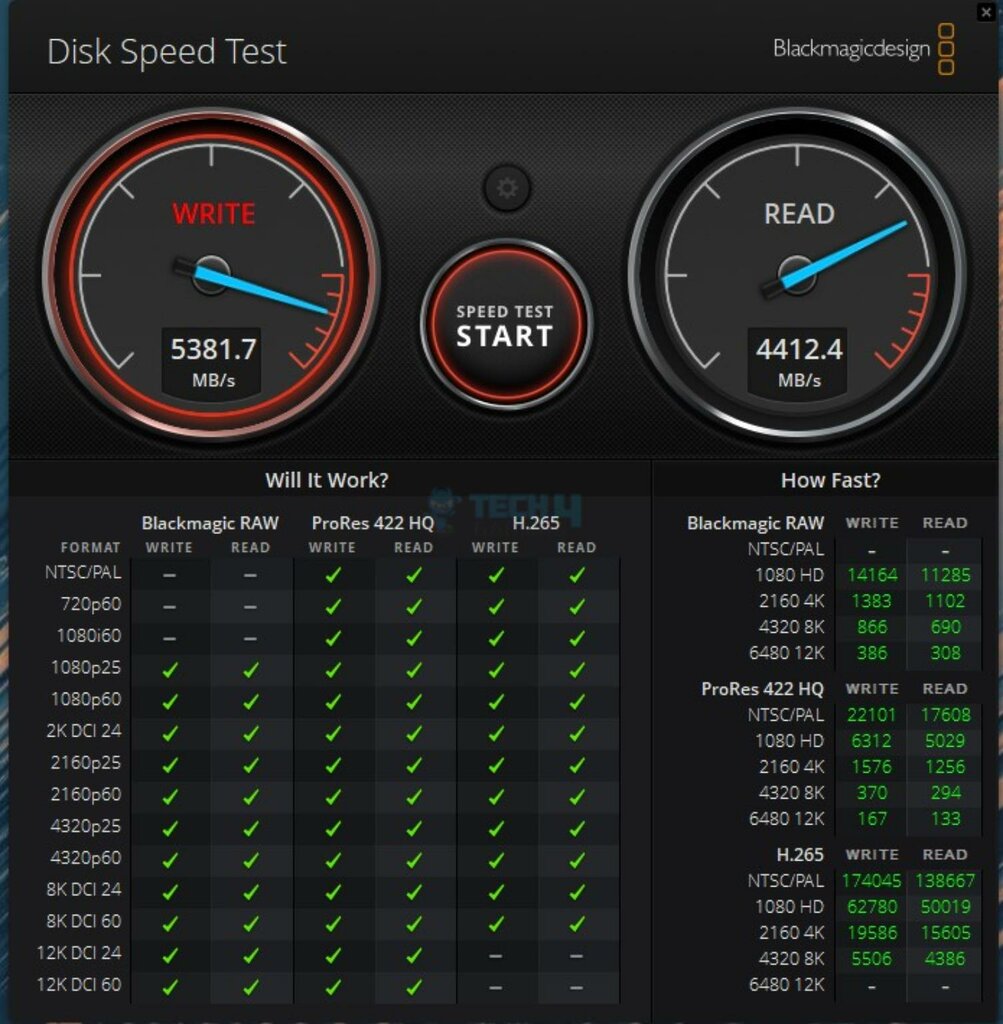
We have used the Blackmagic disk benchmark as well. This is a critical benchmark from the point of view that it monitors the three video compression coders against multiple formats and checks if the drive in hand supports that format and if it does then at what speed.
Real World Testing
Now, it is time for a real-world use. For that, I have used DiskBench in multiple scenarios to check the real-world data transfer rates. We prepared a data set of mixed files and folders including compressed files.
Gaming Load Time
This is the time when gamers are using NVMe SSDs for their games for faster loading. This is why we also test the game load times. This is done using the Final Fantasy XIV: Shadowbringers Benchmark using High settings.
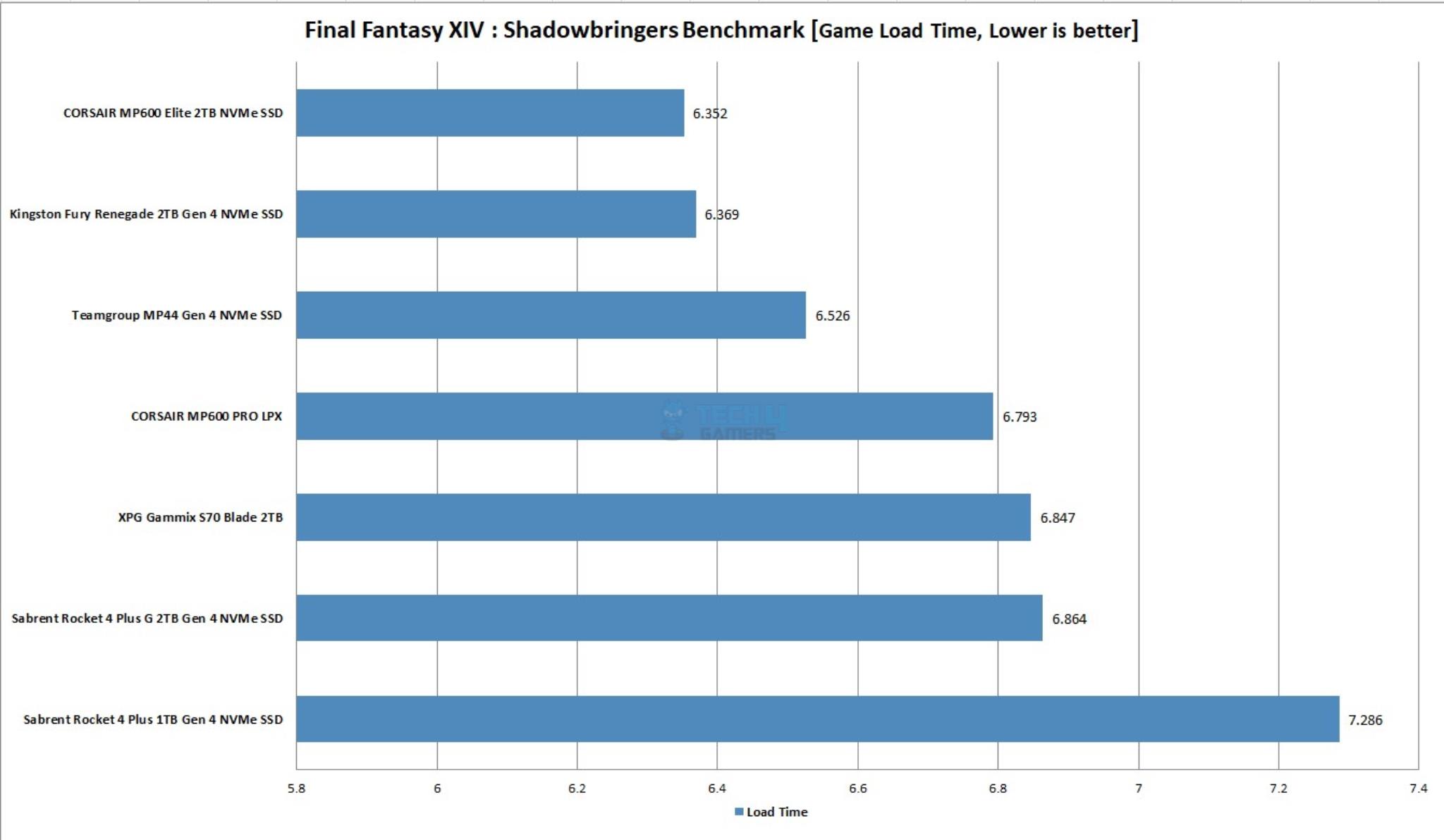
It took 6.352 seconds in total to load the game. This is a competitive performance.
Thermals
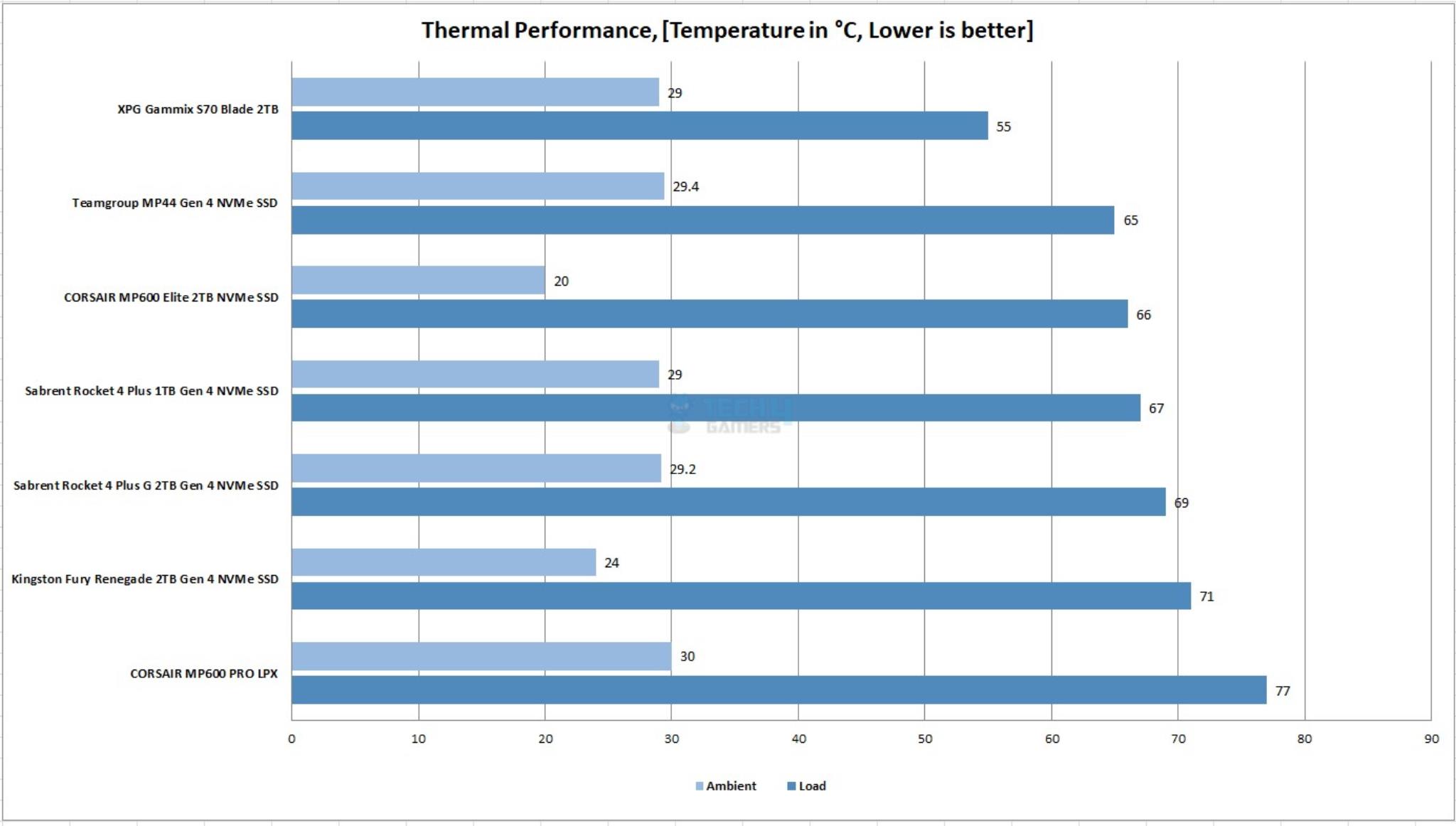
66ᵒC was the maximum temperature recorded when the simultaneous read and write operation of 560GB data was done on this drive. The ambient was 20ᵒC.
Should You Buy It
Buy It If
✅You are looking for a power-efficient drive: The CORSAIR MP600 Elite 2TB NVMe drive uses an efficient controller from Phison which is E27T.
✅You are looking for a cost-effective storage drive: If you are on a budget and looking for a better and more efficient storage solution in the PCIe Gen4x4 category having no CRAM chip, the CORSAIR MP600 Elite is among the contenders. It has a 5-year warranty as well.
✅You need an Encryption-enabled storage drive: This drive features 256-bit AES encryption. If your work needs this security feature, then take a look at the MP600 Elite from CORSAIR.
✅You want Microsoft DirectStorage Support: This SSD supports the Microsoft DirectStorage feature that would be a handy dandy for gamers.
✅You are looking for efficient storage for PS5: The CORSAIR MP600 Elite is compatible with Sony PlayStation 5 as well which would favor the console players.
Don’t Buy It If
❌You are a heavy data user: If you are a power user or your work involves writing large-size files frequently, this drive might not be for you.
Final Words
The CORSAIR’s new MP600 Elite series of NVMe SSDs are available in 1TB and 2TB capacities. These drives are also available in standalone configuration as well as with a heatsink. The main driving force behind these drives is Phison’s new and efficient controller E27T. CORSAIR has employed 162-layered 3D TLC NAND flash with this controller. There is no DRAM chip on these SSDs.
The drive has a dimension of 22x80x2mm. The heatsink edition has a dimension of 24x80x9mm. This makes the MP600 Elite compatible with the Sony PlayStation 5. Not only that but this SSD also supports Microsoft DirectStorage technology that would be handy in the coming time.
These drives feature TRIM, S.M.A.R.T, and Garbage Collection. This drive is using NVMe 1.4 standard over the PCIe 4 x4 link speed. The four-channel controller along with 1TB die each would make the maximum use of this.
The 2TB version is rated for a sequential read speed of up to 7000MB/s and a sequential write speed of up to 6500MB/s. The 4K Random Read and Write speeds are rated for up to 1M IOPS. The TWB rating is 1200 which though is nothing significant, sits well in the competition. The MBTF is 1,500,000 hours.
This drive has performed admirably well in the synthetic benchmarks which makes me wonder if the synthetic test results were even! However, the true potential of this drive is found in real-world testing where this drive offers a decent performance though it sits at the bottom of the competition. CORSAIR offers a 5-year warranty on this drive.
Thank you! Please share your positive feedback. 🔋
How could we improve this post? Please Help us. 😔
[Hardware Reviewer & Editor]
Meet Nauman Siddique, a highly experienced computer science graduate with more than 15 years of knowledge in technology. Nauman is an expert in the field known for his deep understanding of computer hardware.
As a tech tester, insightful reviewer, and skilled hardware editor, Nauman carefully breaks down important parts like motherboards, graphics cards, processors, PC cases, CPU coolers, and more.
- 15+ years of PC Building Experience
- 10+ years of first-hand knowledge of technology
- 7+ years of doing in-depth testing of PC Hardware
- A motivated individual with a keen interest in tech testing from multiple angles.
- I majored in Computer Science with a Masters in Marketing
- Previously worked at eXputer, EnosTech, and Appuals.
- Completed Course in Computer Systems Specialization From Illinois Tech


 Threads
Threads

